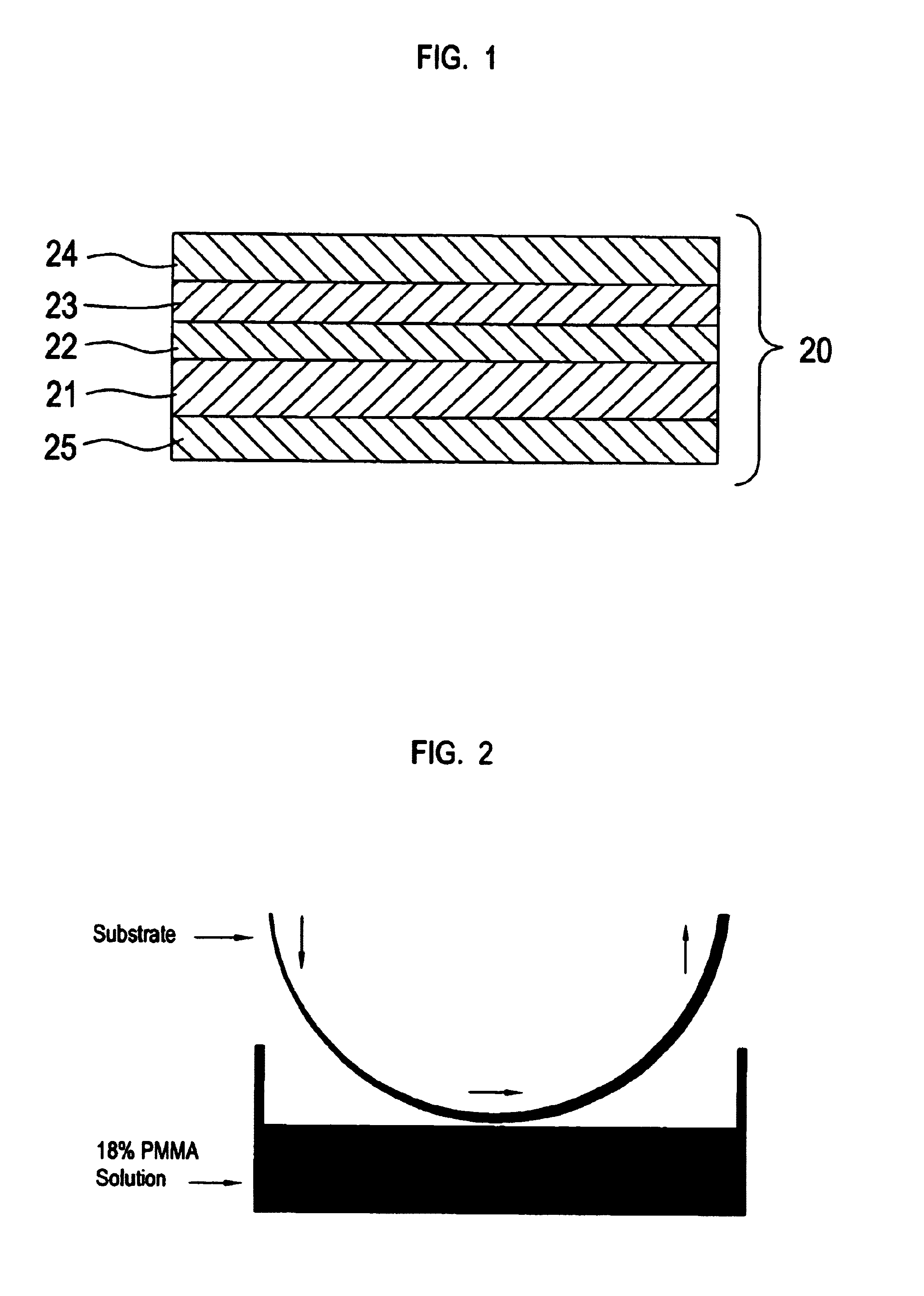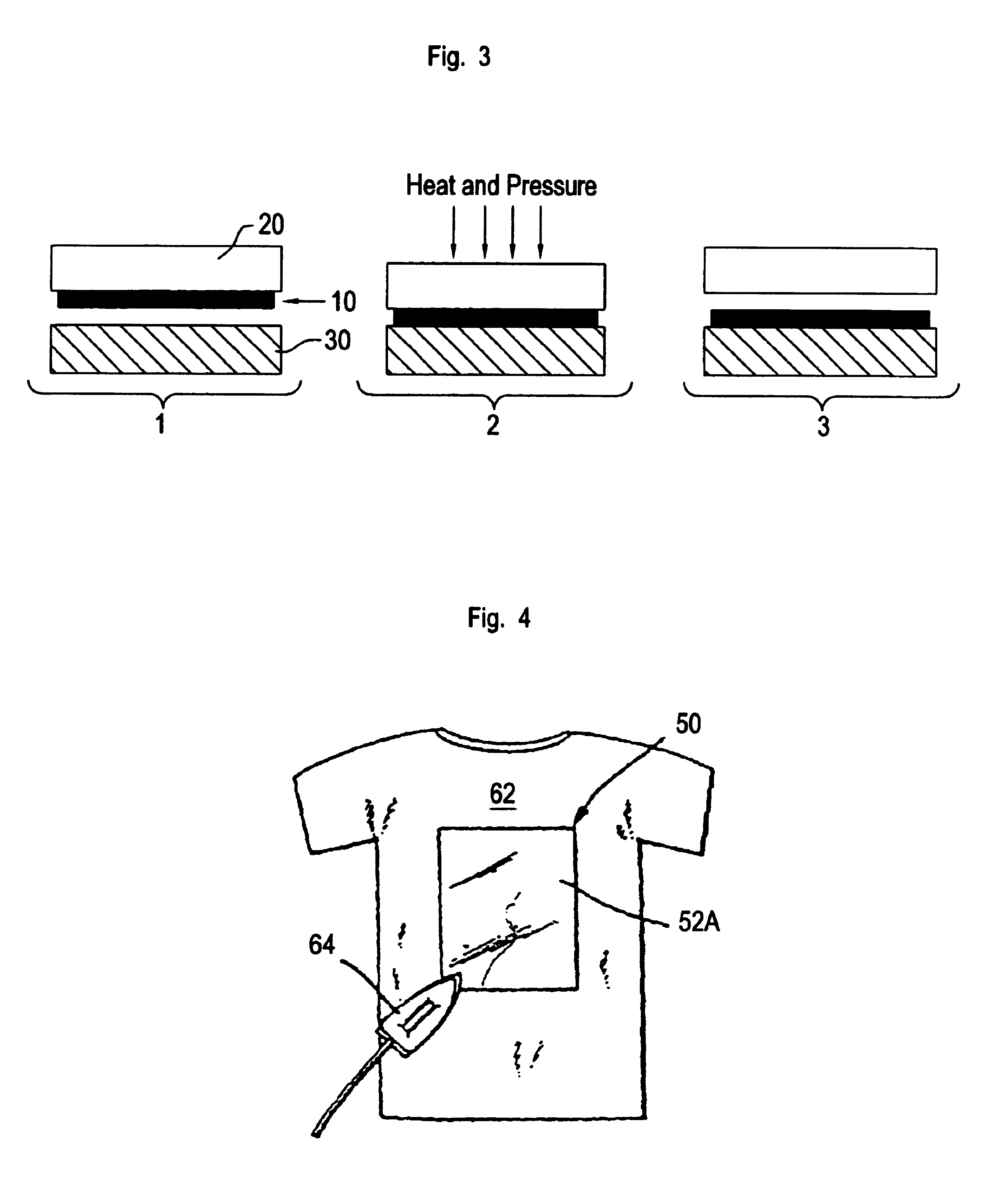Polymeric composition and printer/copier transfer sheet containing the composition
a technology of composition and printer, which is applied in the direction of thermography, nuclear engineering, synthetic resin layered products, etc., can solve the problem that the high temperature of printers and copiers partially melts some polymer materials, and achieves the effect of effective transfer and release and facilitate the imaging of toner
- Summary
- Abstract
- Description
- Claims
- Application Information
AI Technical Summary
Benefits of technology
Problems solved by technology
Method used
Image
Examples
example 1
[0136]A transfer sheet of the present invention is prepared as follows:
[0137]A barrier layer comprising a vinyl acetate-dibutyl maleate dispersion is coated onto a substrate of the present invention (i.e., onto laser printer or copier paper). For the purposes of this Example, the barrier layer is Barrier Layer Formulation 1. The vinyl acetate-dibutyl maleate polymer dispersion is coated by, for example, applying the dispersion in a long line across the top edge of the paper. Using a #10 metering rod, the bead of solution is spread evenly across the paper. The coated paper is force air dried for approximately one minute. Coating can also be achieved by standard methods such as curtain, air knife, cascade, etc.
[0138]Once the barrier layer has completely dried, the release layer solution is coated directly on top of the barrier layer. For this Example, the release layer is Release Layer Formulation 1. The release layer solution is applied in a long line across the top edge of the paper...
example 2
[0142]Referring to FIG. 2, another method of coating the substrate will be described. The first layer to be coated on laser printer or copier paper is a barrier layer of 18% PMMA solution (see, for example Barrier Layer Formulation 2). The 18% PMMA solution is poured into a tray. A sheet of paper is rolled through the solution, coating only one side. Once the paper is coated, the excess PMMA solution is allowed to drain off the paper by dripping and the paper is allowed to dry. Once the barrier layer has completely dried, the release layer solution is coated directly on top of the barrier layer as shown in Example 1. The image receiving layer is applied as shown in Example 1.
example 3
[0143]This Example demonstrates the image transfer procedure. Referring to FIG. 3, to transfer the image, (1) the substrate 20 is placed image side against a receptor 30 of the present invention. Accordingly, the receptor 30 of this example includes but is not limited to cotton fabric, cotton blend fabric, glass and ceramic. A transfer device of the present invention (i.e., a hand iron or heat press) is used to apply heat to the substrate 20, which in turn releases the image 10. The temperature transfer range of the hand iron is about 190° C. The heat press operates at a temperature transfer range of about 190° C. (2) The transfer device is placed over the non-image side of the substrate 20 and moved in a circular motion (if the hand iron is used). Usual pressure applied when ironing is applied as the heating device is moved over the substrate 20. After about 180 seconds (15 seconds if using the heat press) of heat and pressure, the transfer device is removed from the substrate 20. ...
PUM
| Property | Measurement | Unit |
|---|---|---|
| Tg | aaaaa | aaaaa |
| Tg | aaaaa | aaaaa |
| melting point | aaaaa | aaaaa |
Abstract
Description
Claims
Application Information
 Login to View More
Login to View More - R&D
- Intellectual Property
- Life Sciences
- Materials
- Tech Scout
- Unparalleled Data Quality
- Higher Quality Content
- 60% Fewer Hallucinations
Browse by: Latest US Patents, China's latest patents, Technical Efficacy Thesaurus, Application Domain, Technology Topic, Popular Technical Reports.
© 2025 PatSnap. All rights reserved.Legal|Privacy policy|Modern Slavery Act Transparency Statement|Sitemap|About US| Contact US: help@patsnap.com


